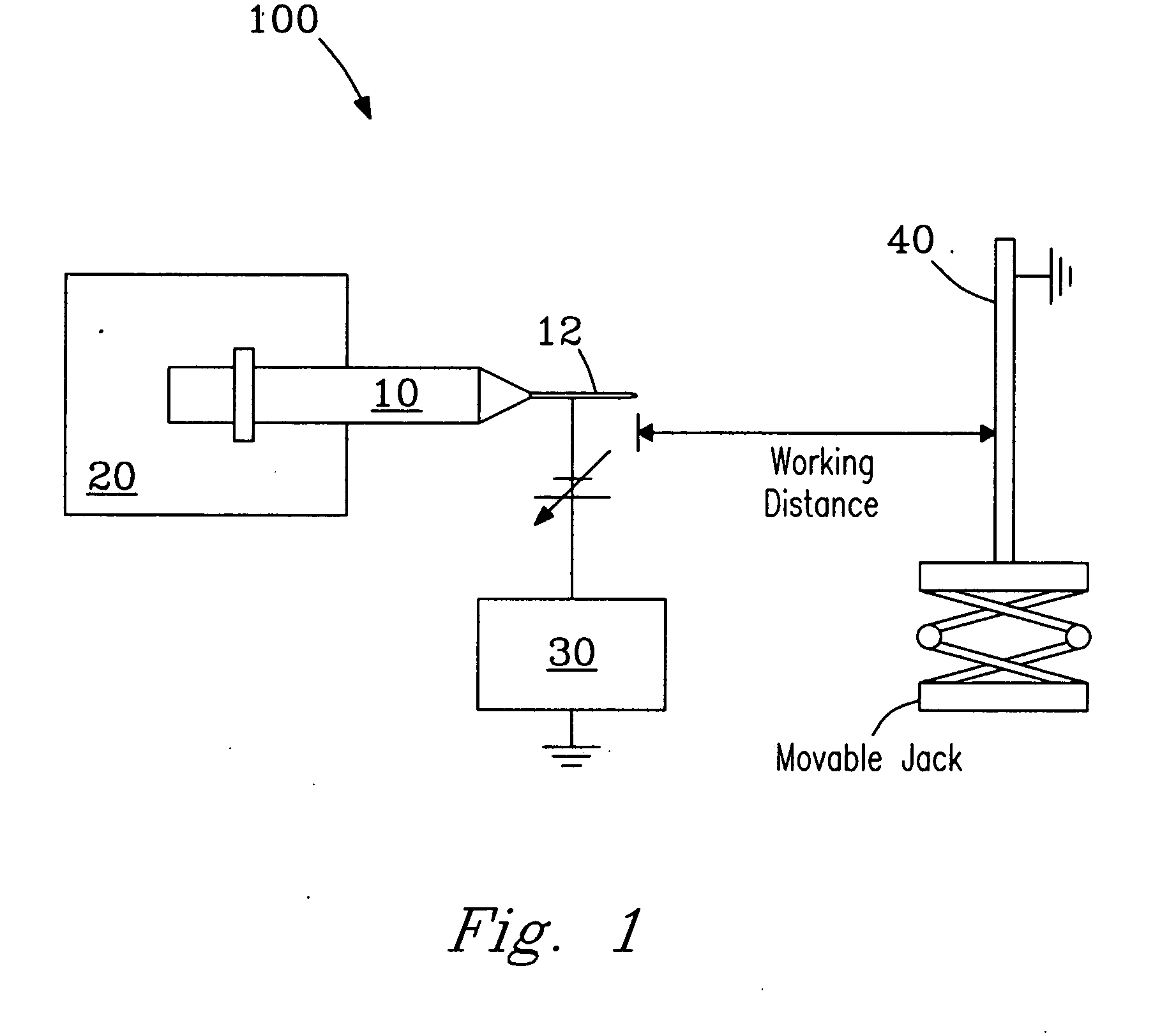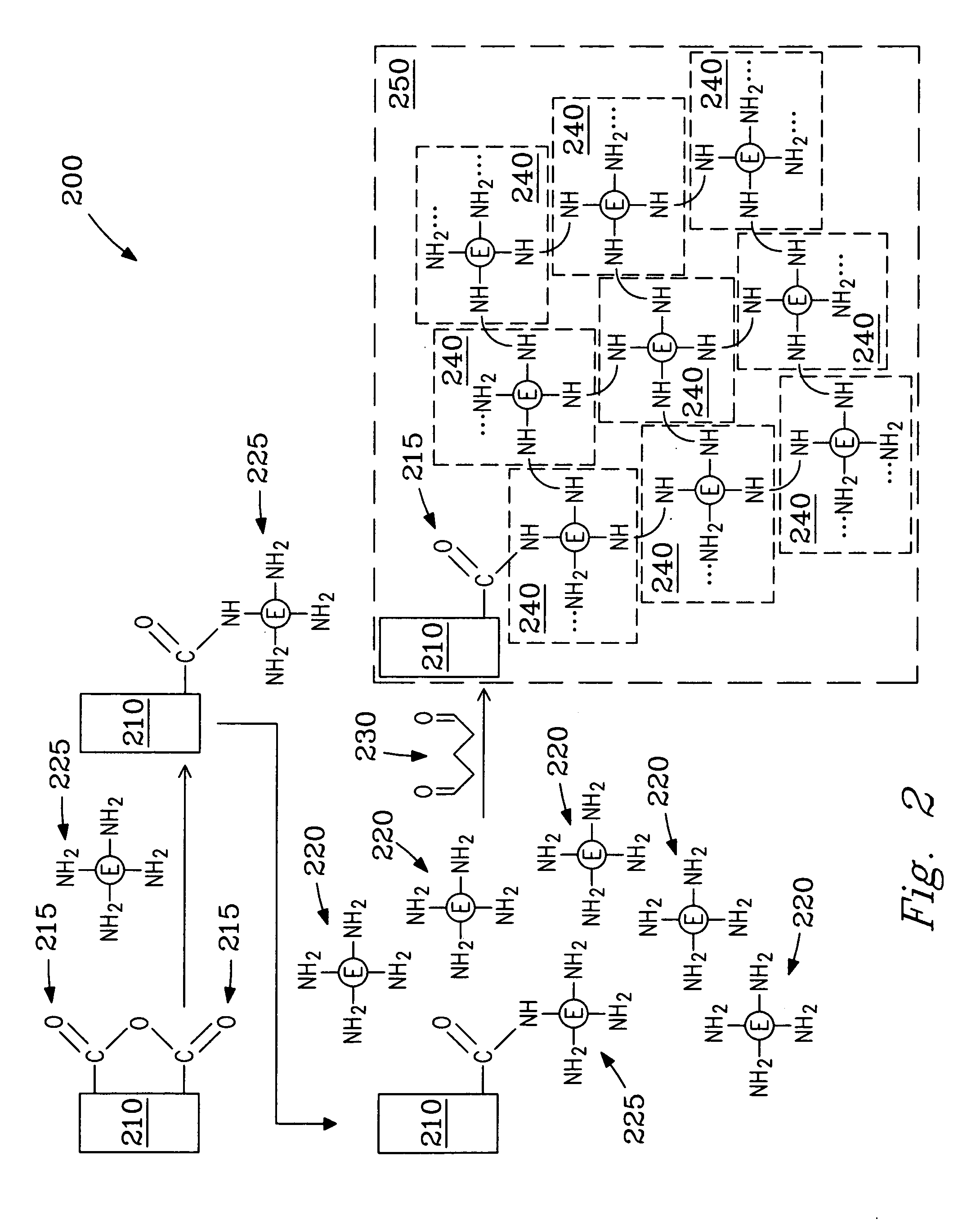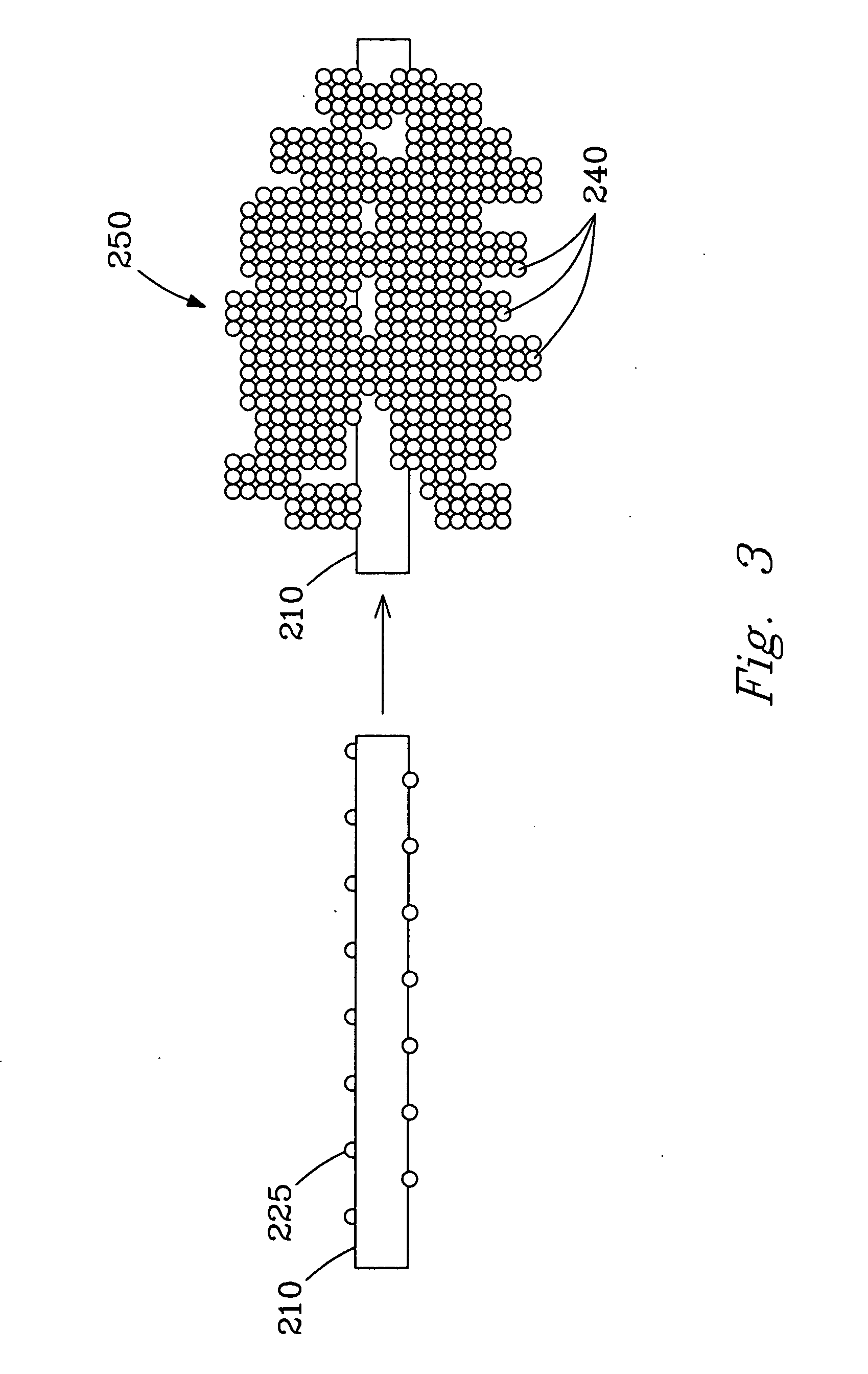Process for preparing high stability, high activity materials and processes for using same
a biocatalytic material and high activity technology, applied in the field of high activity biocatalytic materials and processes for using same, can solve the problems of limited loading capacity by known methods, nanofibers do not have the same mass transfer limitations as other nanostructures, and the development of stable and active enzyme systems remains a challenge. , to achieve the effect of high activity and high stability
- Summary
- Abstract
- Description
- Claims
- Application Information
AI Technical Summary
Benefits of technology
Problems solved by technology
Method used
Image
Examples
example 1
Preparation (Electrospinning) of Fibers using PS and / or PS+PSMA
[0050] Polymer fibers of polystyrene (PS) and / or poly(styrene co-maleic anhydride) (PSMA) were prepared from polymer solutions of polystyrene (PS) (MW=860,000) (Pressure Chemical Company, Pittsburgh, Pa., USA) or PS+PSMA prepared at room temperature by dissolving PS or a mixture of PS and poly(styrene-co-maleic anhydride) (PSMA) (MW=224,000; maieic anhydride content=7 wt %) (Aldrich, Milwaukee, Wis., USA) at a 2:1 weight ratio of PS:PSMA in tetrahydrofuran (THF) (HPLC, 99.9%) (Burdick and Jackson, Muskegon, Mich., USA), followed by magnetic stirring for 1-2 h. THF was used as the solvent due to its high vapour pressure, high volatility, and tendency to generate high pore densities. The concentration of PS and PSMA in the solutions was varied from 9 to 23 wt % and 5 to 9 wt % respectively, depending on the required size range of the fibers. As the concentration of the polymer (PS and / or PSMA) in the solvent increases, vi...
example 2
Physical Characterization of Electrospun PS or PS+PSMA Nanofibers
[0053] Electrospun polymer nanofiber and microfiber specimens were analyzed with scanning electron microscopy (SEM) and reflection-absorption infrared spectroscopy (RAIRS).
[0054] For SEM, a thin layer of gold (˜10 nm) is coated to prevent charging. Image characterization was done using a PhilipsXL-20SEM (Philips ElectronOptics, Eindhoven, the Netherlands). For RAIRS, the e-spun fibers were collected oh a glass slide. The RAIRS analysis was performed using a NEXUS 670 infrared spectrometer (ThermoNicolet, Wis., USA). Incident and reflection angles for the IR beam were 82°; spectral resolution was 4 cm−1.
[0055] The detailed size distribution were obtained with statistical analysis of fibers imaged with SEM. The fiber diameter of the thin one is 444±106 nm and that of the thick one is 3.04±1.03. Hereafter, the former will be called nanofibers and the latter will be called microfibers. Nanosize fibers are of primary int...
example 3
Attachment of Enzymes and / or Enzyme Aggregates to Polymer Fibers
[0057] The PSMA copolymer is an illustrative copolymer for generating nanoscale and microscale fibers described herein given that the copolymer contains a maleic anhydride (MA) functional group that readily forms covalent bonds with primary amines of enzyme molecules. As illustrated in FIG. 2.
[0058] The approach using copolymers such as PSMA can be used with any other polymer fibers if the maleic anhydride group is intact and exposed at the fiber surface.
[0059] RAIRS spectra showed presence of maleic anhydride (MA) groups in the electrospun fibers. In particular, the IR spectrum of the PS nanofiber sample showed all the characteristic bands of polystyrene: a C—H stretch of the aromatic ring at 3000-3100 cm−1, aromatic C—H deformation of the aromatic ring at 1450 and 1490 cm−1, a C═C stretch in the aromatic ring at 1605 cm−1, and aromatic overtones over the range from 1700-2000 cm−1. The IR spectrum of the PS+PSMA fib...
PUM
| Property | Measurement | Unit |
|---|---|---|
| Time | aaaaa | aaaaa |
| Thickness | aaaaa | aaaaa |
| Thickness | aaaaa | aaaaa |
Abstract
Description
Claims
Application Information
 Login to View More
Login to View More - R&D
- Intellectual Property
- Life Sciences
- Materials
- Tech Scout
- Unparalleled Data Quality
- Higher Quality Content
- 60% Fewer Hallucinations
Browse by: Latest US Patents, China's latest patents, Technical Efficacy Thesaurus, Application Domain, Technology Topic, Popular Technical Reports.
© 2025 PatSnap. All rights reserved.Legal|Privacy policy|Modern Slavery Act Transparency Statement|Sitemap|About US| Contact US: help@patsnap.com



